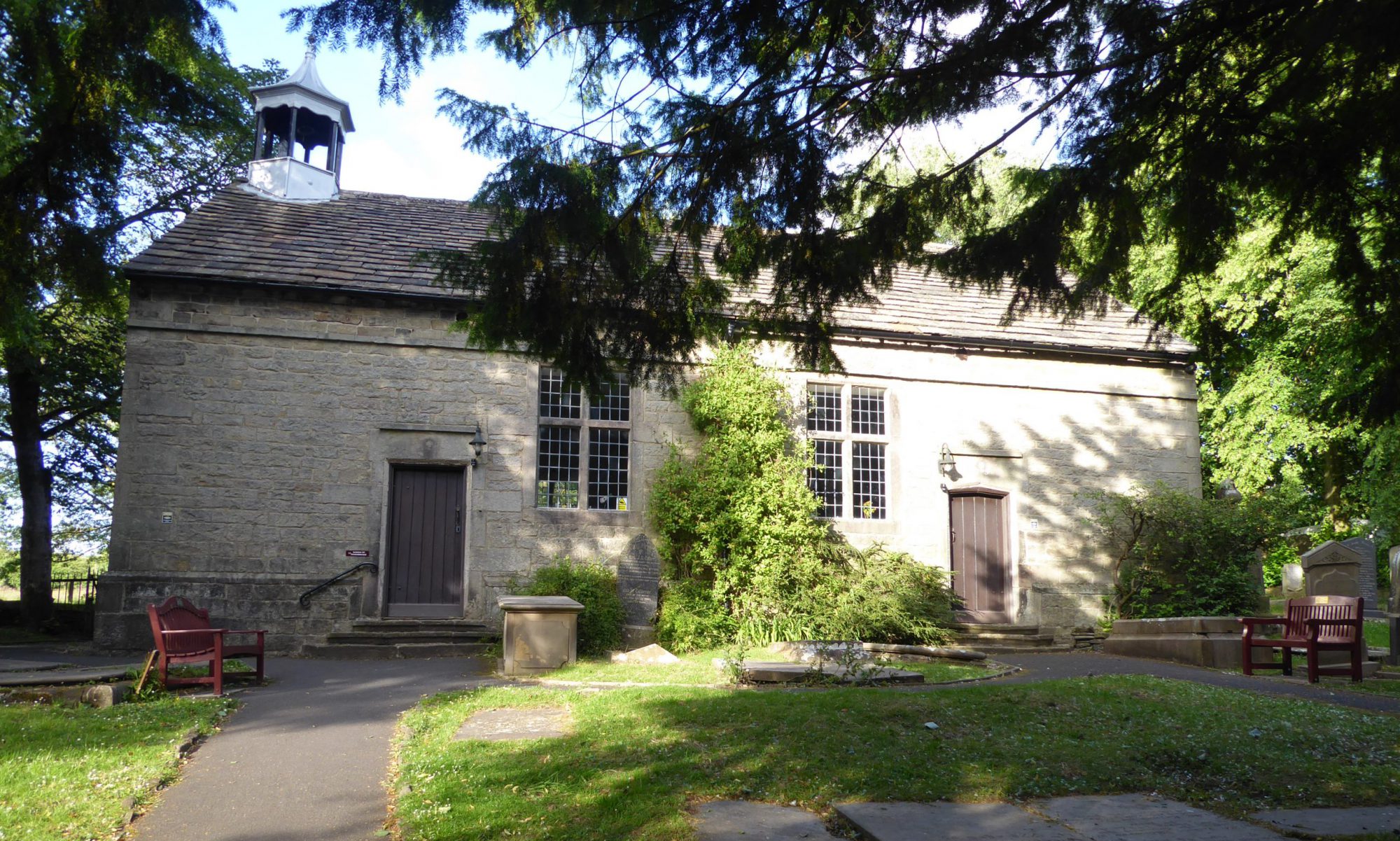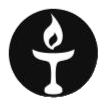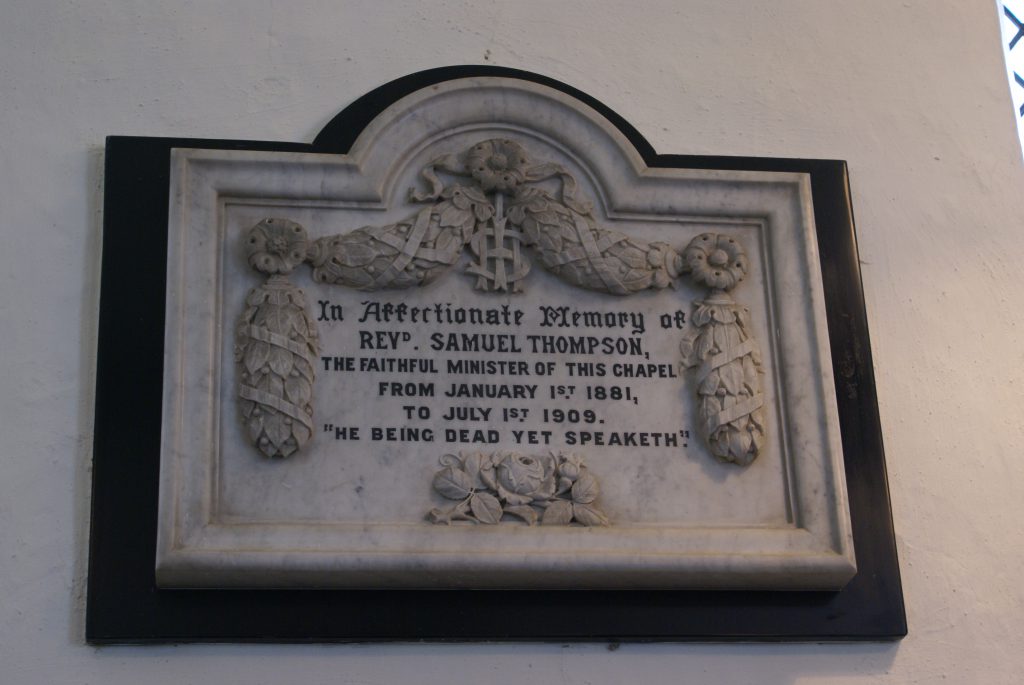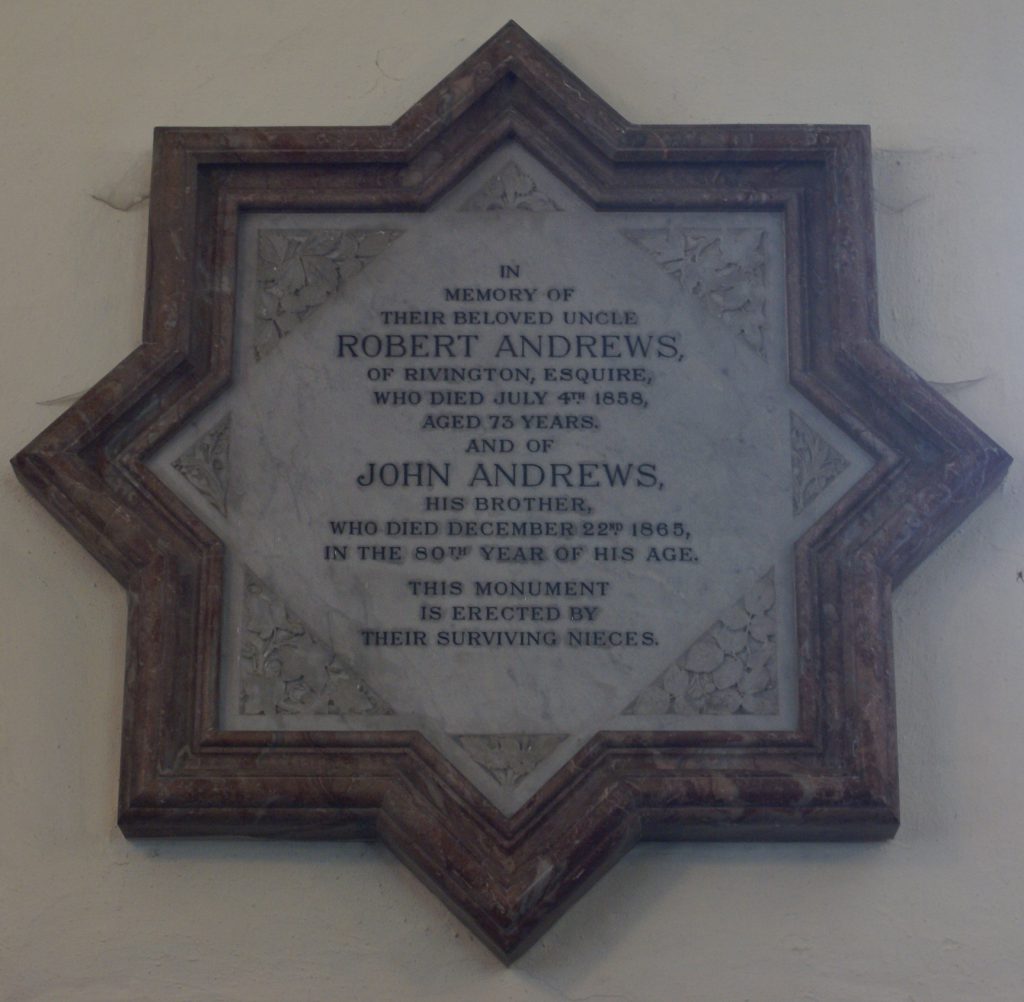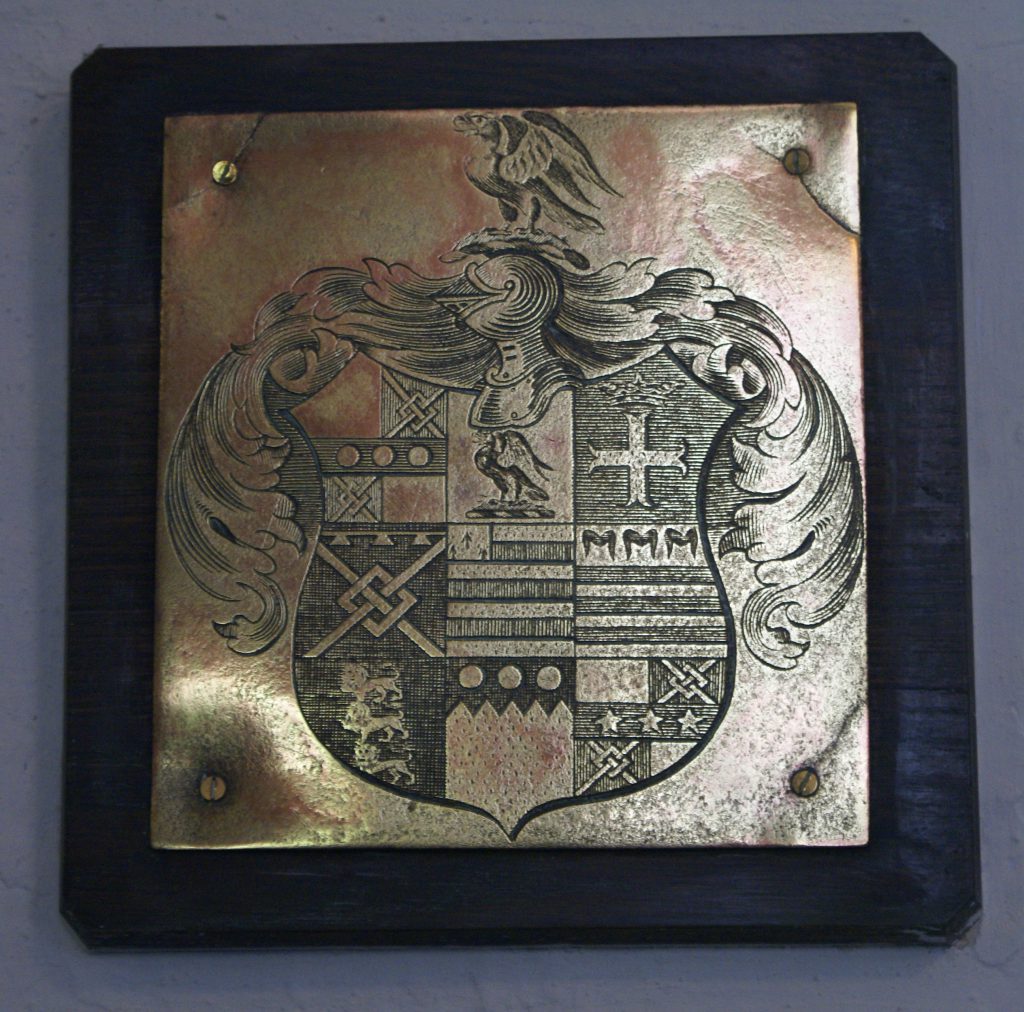The Origins of the Congregation
In 1662, the Act of Uniformity was passed, which required all priests in the Church of England to take an oath that they would adhere rigidly to the forms of worship prescribed in the Book of Common Prayer. Samuel Newton, the vicar of Rivington Parish Church, along with over 2000 other clergymen, refused to take the oath and was expelled from the Church in what became known as the Great Ejection.
Samuel Newton remained in the area, and in the years that followed, it is understood that he led worship for Non-conformists (or Dissenters) outdoors, possibly at Noon Hill on the slopes of Winter Hill. In 1672, he was granted a licence as a Presbyterian teacher and was allowed to hold meetings, probably at a farm on the edge of Rivington.
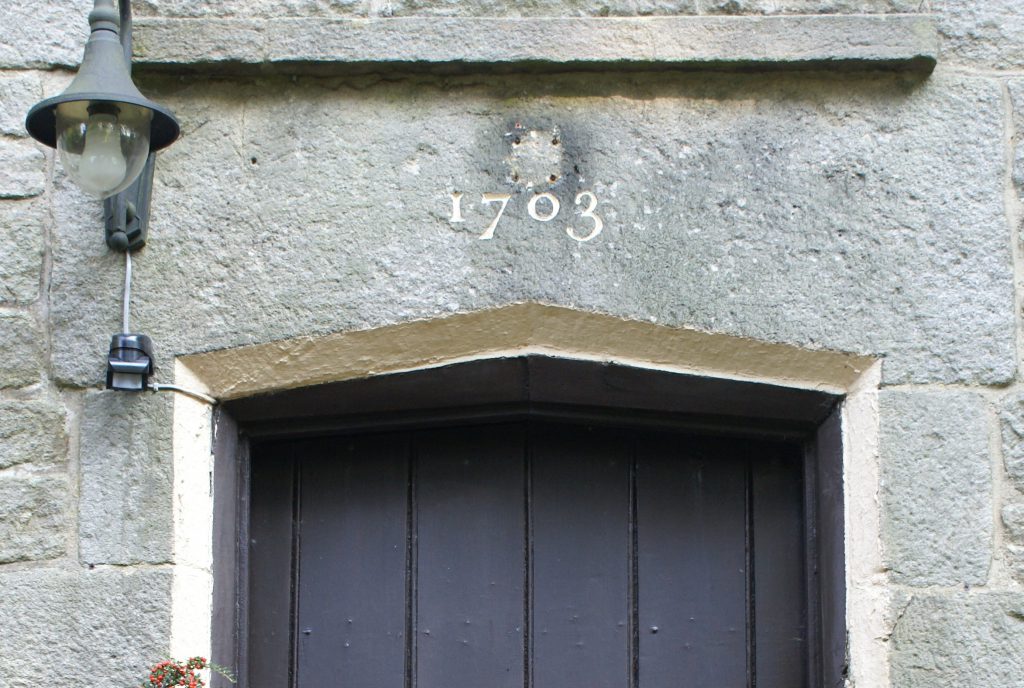
After the Act of Toleration was passed in 1689, Non-conformists had greater freedom of worship. A group of five local men was granted a deed which enabled them to rent the land in Rivington on which the Chapel was built in 1703.
The congregation at this time followed Presbyterian teachings. It is uncertain when the change to Unitarian beliefs occurred. In 1754 some members of the Chapel formed a new congregation in Horwich as they objected to the move towards Unitarian beliefs, but it was probably during the 19th century that the congregation became fully Unitarian. Toleration of Unitarian worship was not granted in this country until 1813.
The Rivington Pilgrimage
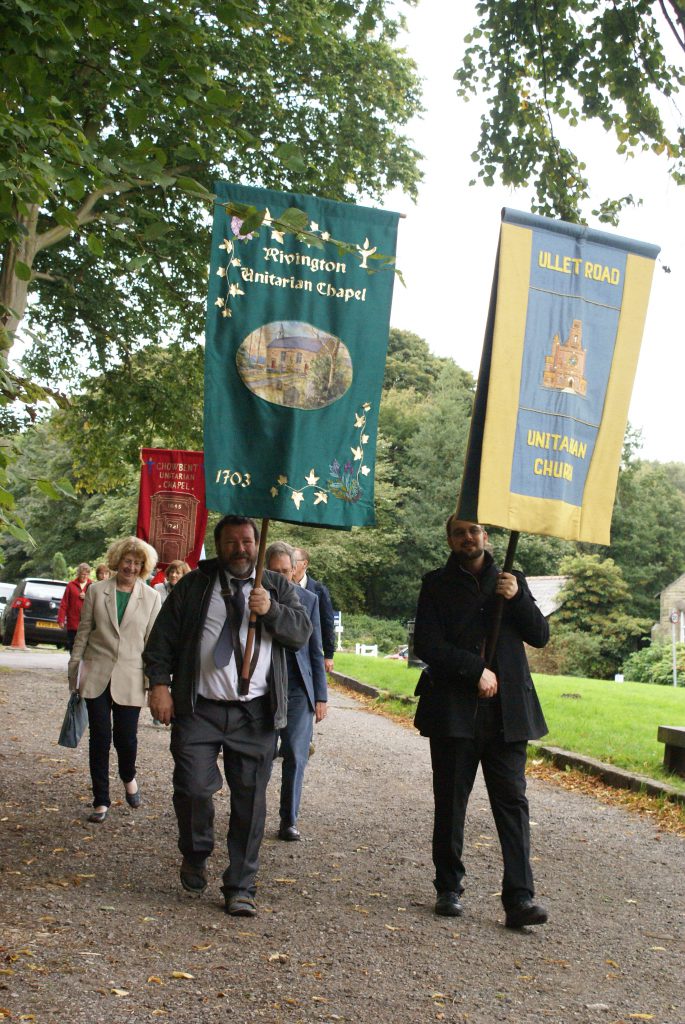
In 1961 Captain John W R Crompton of Rivington Hall, Chairman of the Trustees, and Reverend Eric Shirvell Price, Minister of Bank Street Unitarian Chapel, Bolton, suggested a Pilgrimage as the means by which Unitarians nationally could celebrate the 300th anniversary of the Great Ejection in 1662.
About 360 people made the first Pilgrimage in the following year. There was a dinner in the Tithe Barn followed by a walk to the Chapel for a service, with many people having to sit outside. By popular vote, it was proposed that this should become an annual event. However, by the 1980s, it was decided to hold it once every three years on a Saturday in September. This custom has continued with the next celebration due in 2022.
The Bolton Whitmanites
Rivington Chapel has a direct connection to Walt Whitman, the American poet, via the original Bolton Whitmanites whose number included the Rev. Samuel Thompson who is buried in the Chapel grounds and lived at Chapel House.
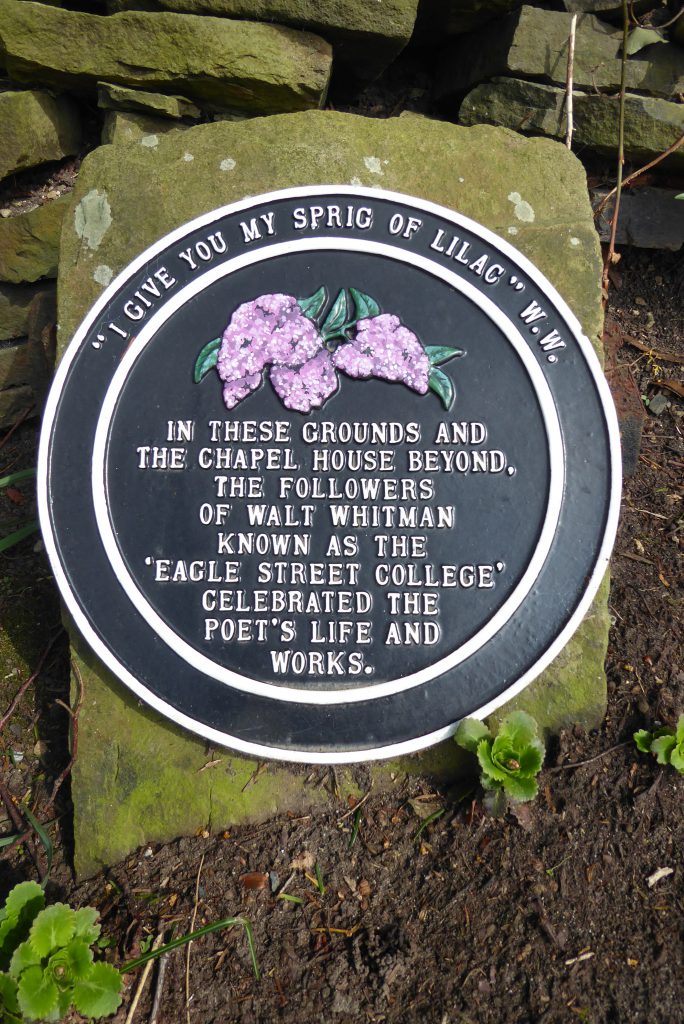
A plaque by the yew tree is one of several plaques in the area indicating links with the Whitmanites.
The inscription across the top says: “I give you my sprig of lilac”
Underneath the depiction of a sprig of lilac are the words: “In these grounds and the Chapel House beyond, the followers of Walt Whitman known as the ‘Eagle Street College’ celebrated the poet’s life and work”
Links are still maintained with the Bolton Whitmanites through a member of the present congregational committee and the organisation held a bi-centennial celebration of Whitman’s birth in the Chapel in 2019.
The History of the Building
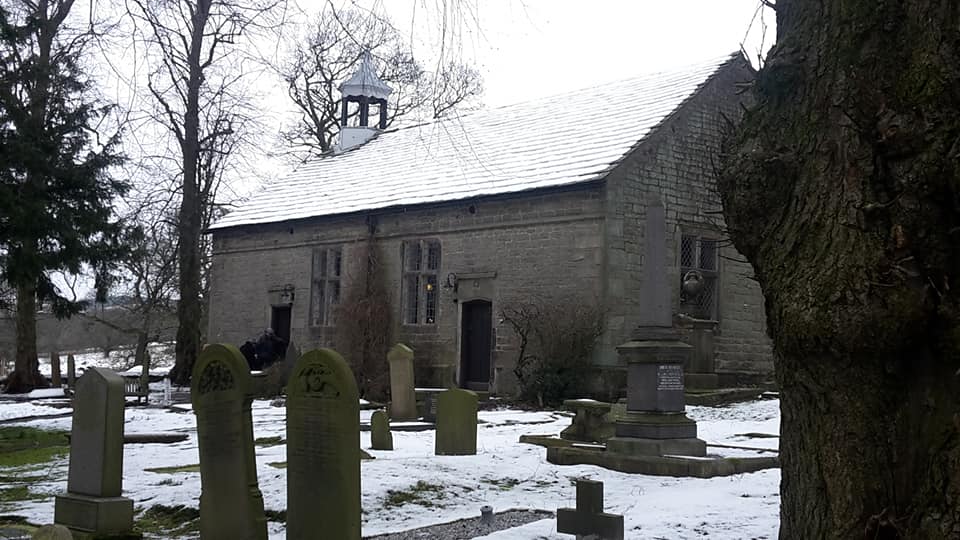
As noted above, although the historic congregation dates from the separation in 1662 from the Parish church, the Chapel itself was not built until 1703. The building has a Grade II* listing,
This is what the Historic England listing says:
Unitarian chapel. Dated 1703. Squared sandstone with quoins, chamfered plinth, stone slate roof with gable bellcote. Both sides and both gables have 2 large cross-windows with small panes, the panes diamond-latticed in the gable walls and rectangular in the side walls; flanking the windows on the south side are 2 doorways with chamfered surrounds, that on the right with a pointed head and lintel inscribed “1703”. On the west gable is a small hexagonal bellcote with a swept roof. Attached at the north west corner is a single-bay 2 storey wing with roof hipped down to the junction but gabled at the other end, with a tall chimney stack; this part has a door and one window on each floor of the west side and two 2-light square-mullioned windows on the east side, mostly with diamond lattice glazing. Interior: original box pews including choir stall at east end; between windows on north wall a raised 5-sided panelled pulpit with carved frieze and moulded cornice, and further east on the same wall a very large C18 wall monument to the Willoughby family of Parham, very fully lettered and with coats of arms and shields on the panel above the lettering; between windows on south side, Willoughby family pew with panelled reredos and very prominent moulded and carved cornice in classical style. NB: in graveyard at east end of chapel is the gravestone of Samuel Oldknow “of Nottingham, late of Anderton” ob 1759, one of the earliest textile factory builders.
The interior of the Chapel had a major refurbishment in 1952. Photographs of the interior during renovation pre and post renovation can be seen on the ephemera page. Further restoration work took place in 1990.
The Samuel Newton tablet
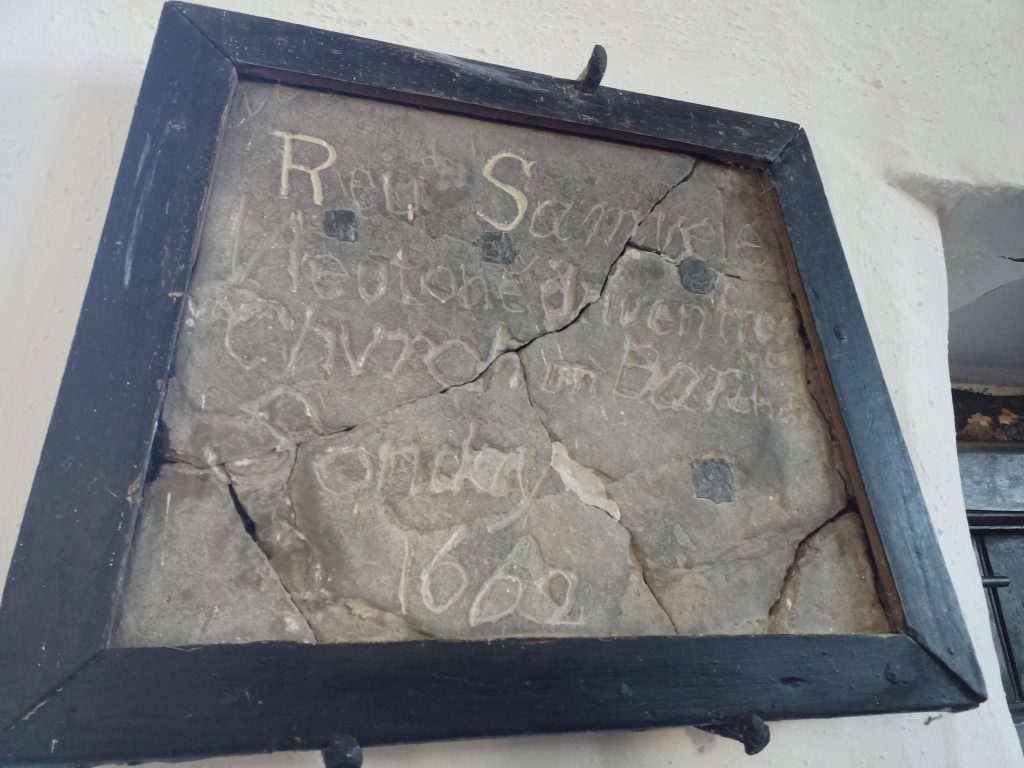
In 1844 a stone was discovered by workmen when they were demolishing a wall by the village green. Although it was broken, the pieces were framed and mounted on the Chapel wall. The inscription reads: “Rev Samuele Newton driven from Church on Bartholomew Sonday 1662”
The Willoughby Memorial
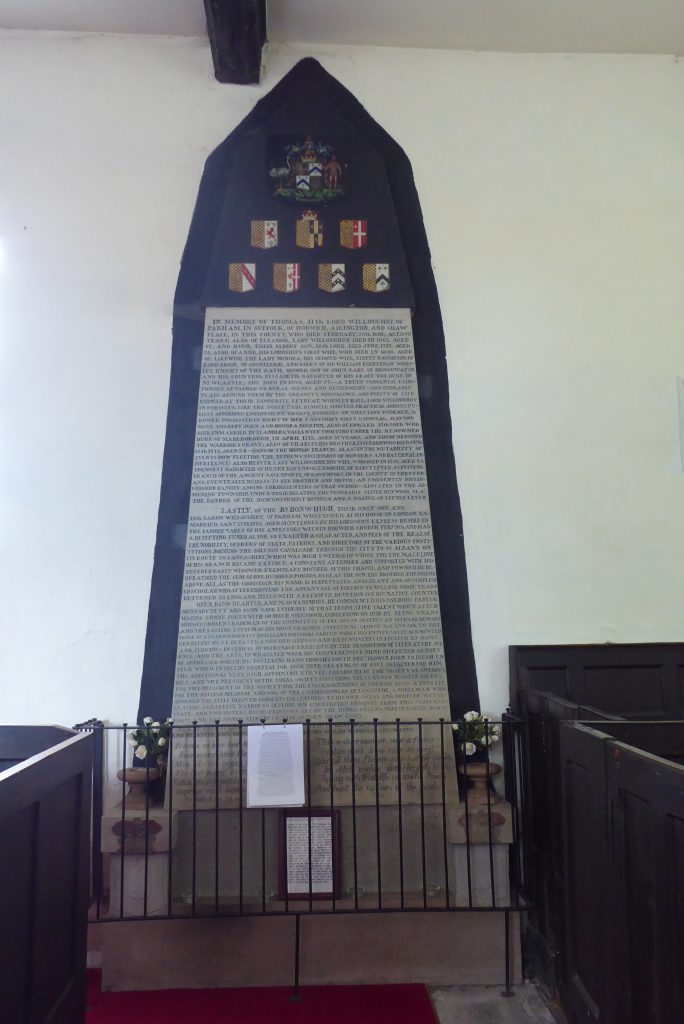
The Willoughby Memorial dominates the pulpit side of the building. This is supposedly a copy of the original memorial that was in Horwich Chapel (later to become the Parish Church) and was commissioned by John Shaw.
In 1993, The Chapel Trustees arranged for the monument to be restored by Harrison Hill Limited in Northamptonshire for which English Heritage was gave a generous grant. Their report can be found here.
It is not known what happened to the original memorial, but it is no longer in the Horwich Parish Church. The present Horwich Parish Church was built around 1831 alongside the old chapel which was demolished shortly after. It may be that this was when the original of the monument disappeared.
Correspondence in Local Gleanings in the Manchester Courier during February and March 1877 cast some doubt as to whether there was an original in Horwich Chapel.
The Organ
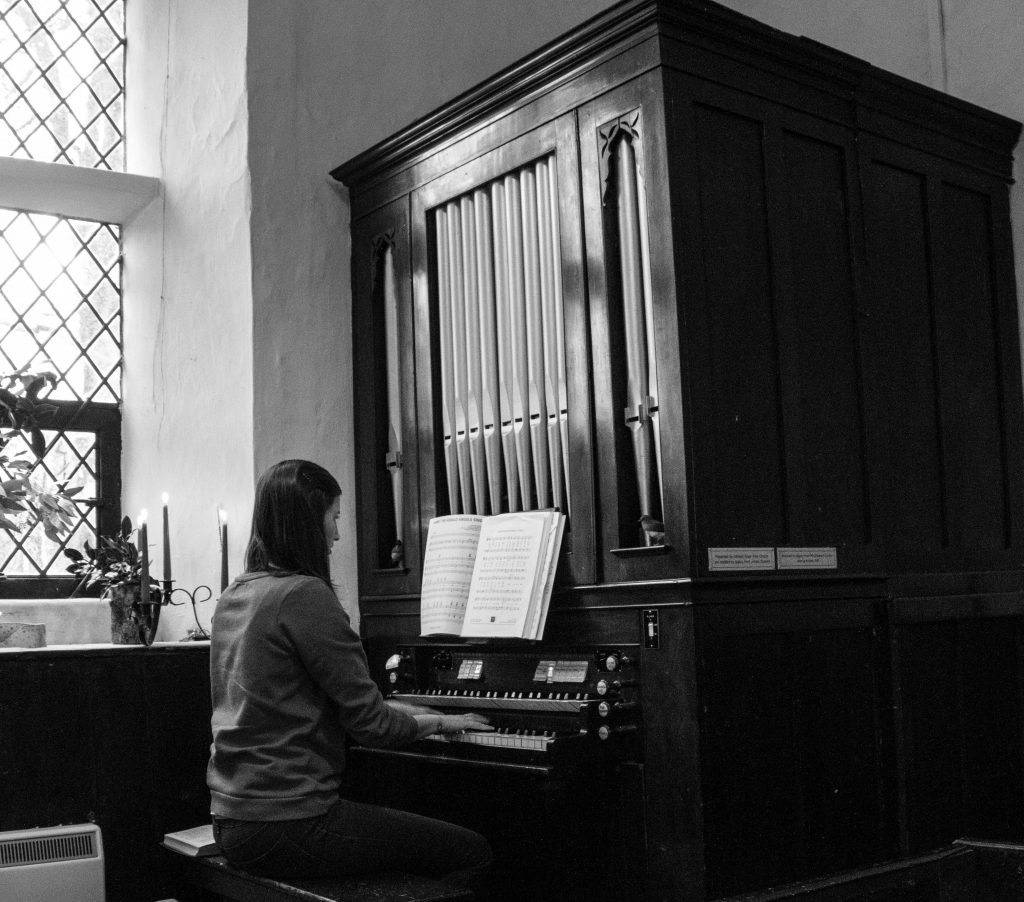
The date and origin of the organ are unknown but it probably started life as a single manual gentleman’s parlour organ. It has had many alterations over the years. It currently has one manual that plays through the organ pipes and another that is electronic. The organ was donated by Halliwell Road Free Church in Bolton around 1967/68.
